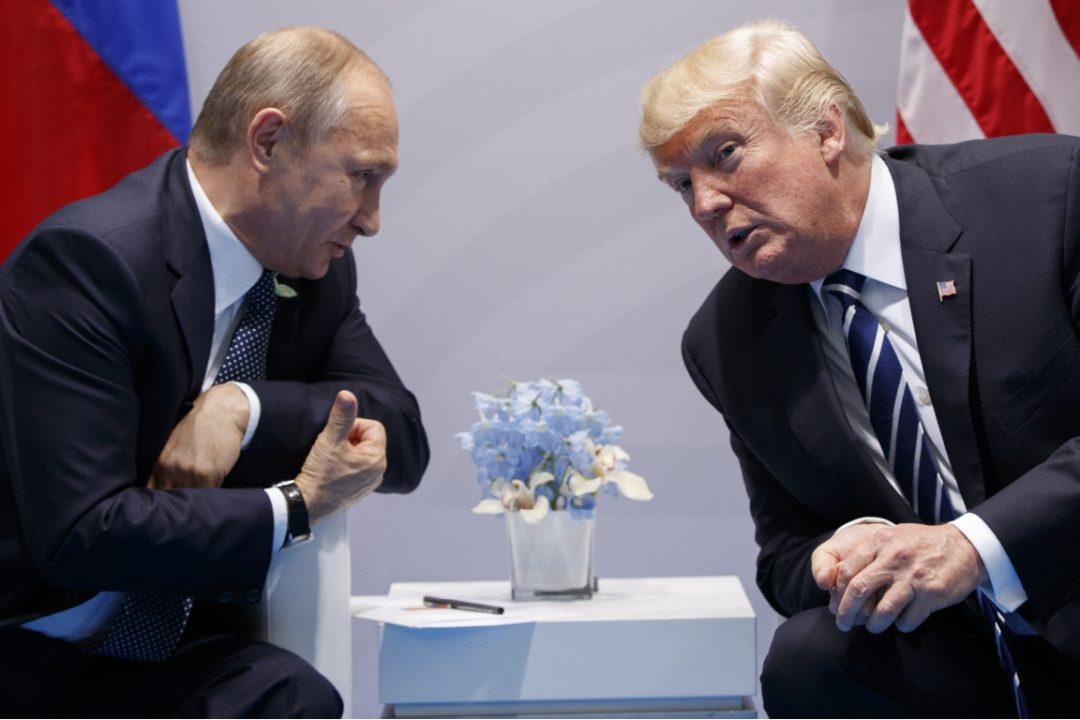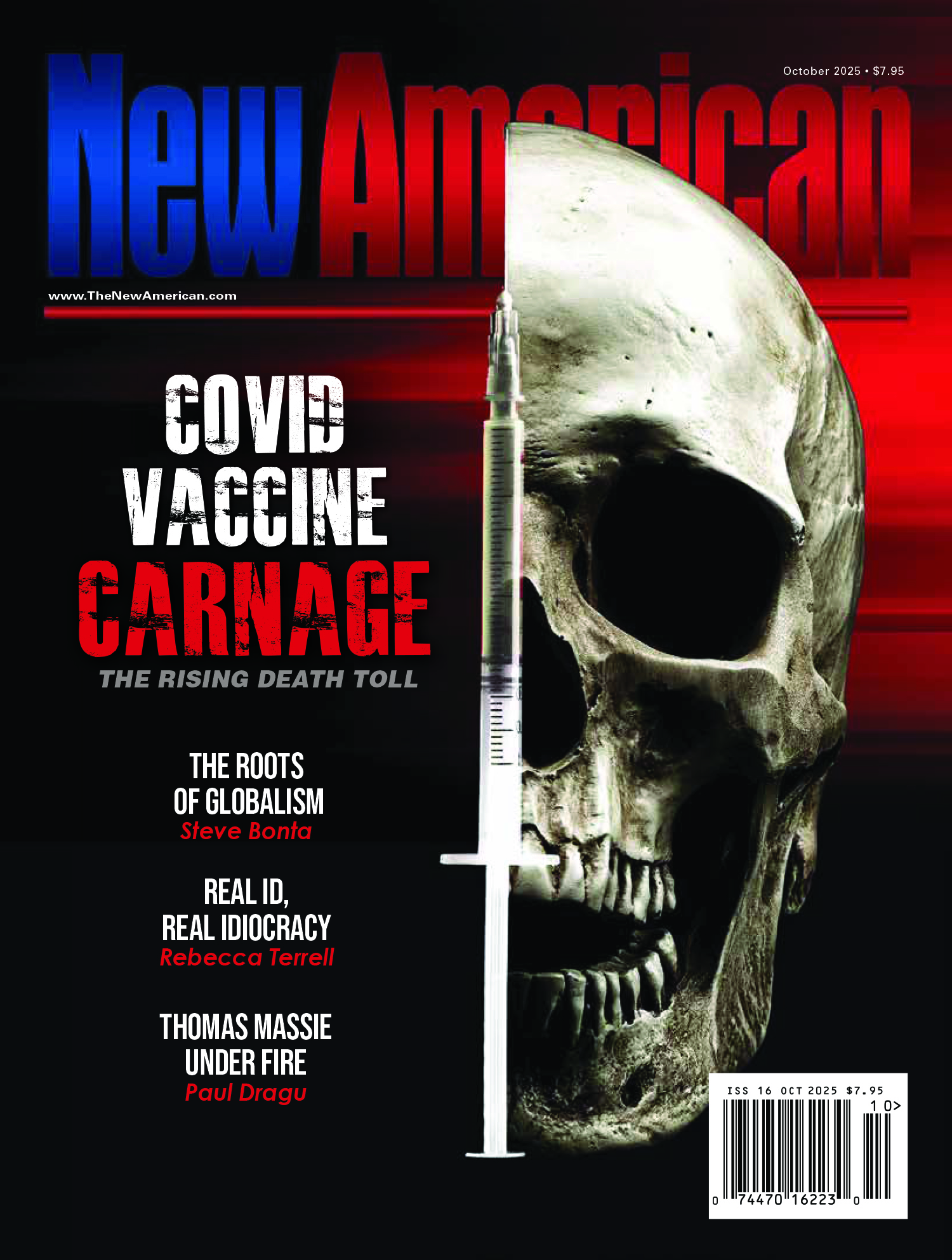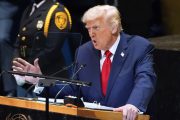
Another call between the heads of America and Russia; another jolt of optimism that the war in Ukraine has a chance, however slight, of ending soon.
One month after President Donald Trump said he was ready to abandon his self-appointed position as mediator between the leaders of two nations at war, he had a two-hour conversation with Russia’s president.
Trump framed Monday’s talk in hopeful terms: “Just completed my two hour call with President Vladimir Putin of Russia,” he announced to the world on his Truth Social account. “I believe it went very well.”
Trump indicated the United States will play a minimal role, if any, in this round of negotiations and that the haggling will begin soon. “Russia and Ukraine will immediately start negotiations toward a Ceasefire and, more importantly, an END to the War. The conditions for that will be negotiated between the two parties,” he said.
Business Partners
The U.S. president also teased there’s something in it for the United States should peace prevail. The two power nations, which for half a century pointed nuclear missiles at each other, could become business partners. “Russia wants to do largescale TRADE with the United States,” Trump beamed.
Developing business relations is something both sides have expressed interest in. Putin is on record wooing U.S. business to Russia. He brags that Russia, with its expansive, continents-spanning territory, has a treasure trove of the minerals, rare-earths, and other natural resources the Trump administration has been on a mission to dig up.
Trump finished off his post by saying that Pope Leo XIV wanted to host the upcoming negotiations.
Russia Optimistic
Putin presented his view of the call in a more reserved, yet still optimistic, tone. “I would like to emphasize that it was both substantive and quite candid. Overall, I believe it was a very productive exchange,” he said.
The Russian leader said he was ready to start the peace process. But he made clear that any acceptable agreement has to work for Russia, a statement that comes with implications that have caused Ukraine and its supporting cast in Western Europe’s peanut gallery to balk in the past. Putin said:
Russia’s position is clear. Eliminating the root causes of this crisis is what matters most to us.… We agreed with the President of the United States that Russia would propose and is ready to engage with the Ukrainian side on drafting a memorandum regarding a potential future peace agreement. This would include outlining a range of provisions, such as the principles for settlement, the timeframe for a possible peace deal, and other matters, including a potential temporary ceasefire, should the necessary agreements be reached.
Putin has cited a number of reasons for the 2022 invasion, including putting an end to Ukraine’s discrimination of Russian loyalists and de-Nazification. The fact that Ukraine has a substantial Nazi terrorist organization in the Azov Battalion is something Western media has worked hard to memory hole since this war began. But prior to that, even the democratic chairman of the Homeland Security Subcommittee on Intelligence & Counterterrorism tried to get the Trump administration to designate Azov a terrorist organization.
“Root Cause”
But Russia’s foremost “root cause” is Ukraine’s desire to join the North Atlantic Treaty Organization (NATO). The Kremlin considers NATO an enemy alliance, and it sees Ukraine as a buffer between the Motherland and the unfriendly West, however unjust that may be for Ukraine. Foreign-policy experts including George Kennan and Jeffrey Sachs have warned — Kennan back in the 1990s — that NATO’s eastward expansion would inevitably trigger a violent Russian reaction.
Ironically, Putin’s agenda to prevent further NATO expansion, has, at least in part, achieved the opposite. Ukraine has not and likely will not join NATO, but two other nations, Sweden and Finland, recently have. And one of those, Finland, sits on Russia’s northwestern border.
New Territory
The Kremlin has in the past indicated that any acceptable peace deal must recognize Russia’s new borders. It’s hard to imagine how much, if any, of the territory Russia has gained over the last three years it is willing to relinquish, especially since things are going swimmingly for them. In addition to Crimea, Russia now controls the entire eastern borderland — and it continues inching westward with every passing day. Ukrainian President Volodymyr Zelensky has balked at the idea of giving up even Crimea, which has been under Russian control since 2014. “Ukraine will not legally recognize the occupation of Crimea. Nothing to talk about here. This is against our constitution,” he said back in April. But he’s already lost it, along with the previously mentioned territories. Futhermore, he has neither the power nor the necessary international support to get it back. With the United States dialing back support and no longer writing blank checks, and Western European allies being largely militarily neutered, Zelensky doesn’t have the cards. And the longer he waits to negotiate a deal, the more territory he loses.
Reality on the Ground
If a peace deal is to be reached soon, it will heavily favor the Russians. Zelensky will have to come to grips with reality. Not only is Europe’s support nothing more than rhetoric and bluster, but Ukraine’s army is emaciated. Owen Matthews reported in The Spectator:
Indeed Ukrainian MP Heorhiy Mazurashu (a member of Zelensky’s Servant of the People party) warned yesterday that a military collapse and a crisis in recruitment is taking a serious toll on Ukraine’s fighting ability. “The army is critically understaffed,” Heorhiy Mazurashu told Politika Strany. “We can hide your head in the sand and pretend that everything is fine, that we can keep chasing people into the army and this will solve the problem somehow, but … hope for hope’s sake won’t have any effect.
This isn’t the first time Trump and Putin have talked. And it isn’t the first time both sides have projected high hopes for peace only to have those hopes dissipate. In March, after multiple such episodes, Trump expressed among the first signs of frustration with the Russian leader. Putin had suggested Zelensky should be removed before peace talks can continue. As a result, Trump threatened secondary tariffs on Russia. Near the end of April, Trump scolded Putin after Russia launched a drone attack on Kiev. The attack killed a dozen people and injured several more. Moscow launched the strike hours after Zelensky rejected a U.S. peace proposal that reportedly included acceptance of Russia’s 2014 annexation of Crimea.
Whatever happens in the coming days and weeks, it looks like it will be up to the two parties involved. And if Ukraine is serious about stopping the bleeding, it will have to negotiate while holding its nose.





